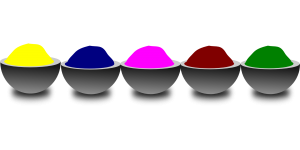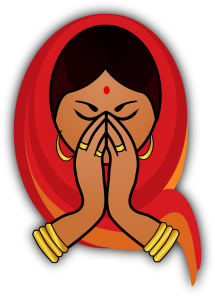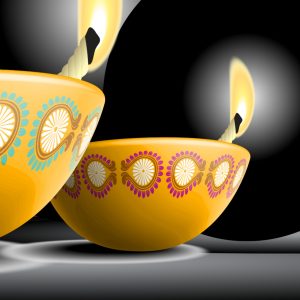
The following is an excerpt from a class given by Śrīla Bhaktivedānta Nārāyaṇa Mahārāja in Wales, on July 4, 2000
We have not come to this world only to manage. If you are managing your preaching centre, it is not enough. Why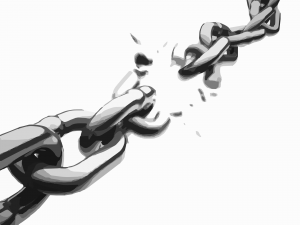 manage a centre if you are not following these things? No need of any centre. If you are always quarrelling and not obeying, not chanting, remembering, or uttering the mantras – always thinking, “Is he doing this?” or of this building here or there, then there is no need of a centre. If you cannot develop your Krsna consciousness, there is no use.
manage a centre if you are not following these things? No need of any centre. If you are always quarrelling and not obeying, not chanting, remembering, or uttering the mantras – always thinking, “Is he doing this?” or of this building here or there, then there is no need of a centre. If you cannot develop your Krsna consciousness, there is no use.
The following is an excerpt from Selected Nectarean Advice by Śrīla Bhakti Śrīrūpa Siddhāntī Mahārāja, published in Rays of The Harmonist Kārttika 2006
Many, who are disciples in name only, even try to destroy the institution when Śrī Gurudeva disappears because the honour they receive decreases at that time. These people are most inimical to guru and most certainly condemned to hell.
The following is an excerpt from the book My Śikṣā-guru and Priya-bandhu by Śrīla Bhaktivedānta Nārāyaṇa Mahārāja
Although they separated from the political upheaval taking place within their Guru Mahārāja’s institution, they did not give up Śrīla Bhaktisiddhānta Sarasvatī Prabhupāda or his mission and siddhānta. They wanted to re-establish his bona fide ideas and instructions, and they did not give up his Gauḍīya Maṭha. Therefore, the names of the maṭhas established by the Gauḍīya Vedānta Samiti were Devananda Gauḍīya Maṭha, Uddharana Gauḍīya Maṭha, Keśavajī Gauḍīya Maṭha, and so on.
Bhaktisiddhānta Sarasvatī Prabhupāda or his mission and siddhānta. They wanted to re-establish his bona fide ideas and instructions, and they did not give up his Gauḍīya Maṭha. Therefore, the names of the maṭhas established by the Gauḍīya Vedānta Samiti were Devananda Gauḍīya Maṭha, Uddharana Gauḍīya Maṭha, Keśavajī Gauḍīya Maṭha, and so on.
The following is an excerpt* from an evening class given by Śrīla Bhaktivedānta Nārāyaṇa Mahārāja in Eugene, Oregon, on July 8, 1996
I’m thinking that we are in iṣṭa-goṣṭhī. We are all are devotees here; we are all friends, and we are expressing our ideas to each other. In this iṣṭa-goṣṭhī, first I want to say that after the disappearance of Śrīla Prabhupāda Bhaktisiddhānta Sarasvatī Gosvāmī, many of the senior Vaiṣṇavas, and especially those who were sincere and very beloved to Śrīla Prabhupāda, left his mission. They came out of that mission, but they never left their Gurudeva or his teachings, or anything associated with Kṛṣṇa consciousness.
Once, someone said to Gurudeva, Śrīla Bhakti Prajñāna Keśava Gosvāmī Mahārāja, “Those who have left the Gauḍīya Mission have left Śrīla Prabhupāda’s teachings.” Gurudeva replied, “We have never left Śrīla Prabhupāda, we will never leave, and in the future we will continue to serve. Let us see what happens in the future.”
It was actually the accusers themselves who had abandoned Kṛṣṇa consciousness, and they even left Śrīla Bhaktisiddhānta Sarasvatī Gosvāmī. So, don’t think that. Let those who are barking like this bark. Pure disciples never abandon their Gurudeva. They never relinquish the service of Vaiṣṇavas. They never leave the teachings of their Gurudeva. They never disavow Caitanya Mahāprabhu, Nityānanda Prabhu, and all the Vaiṣṇavas, like Rūpa Gosvāmī, Sanātana Gosvāmī, and Raghunātha dāsa Gosvāmī. They never stop serving the Divine Couple, Śrī Śrī Rādhā-Kṛṣṇa.
They may give up one place and go to another place – they may change their place – but they will always have regard for the place where their Gurudeva has left his foot-dust.
So you should never think it is a problem if you are in a different place. Take it as the blessings of your 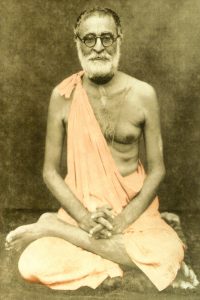 Gurudeva that you are now fully absorbed in chanting and serving him and the Divine Couple Rādhā-Kṛṣṇa, as well as Caitanya Mahāprabhu – Gaura-Nityānanda Prabhu. They are giving this chance. We see that Nārada Ṛṣi and Vyāsadeva were not together all the time, but their hearts were together. Śukadeva Gosvāmī went here and there. We see that Rūpa Gosvāmī, Sanātana Gosvāmī, and Raghunātha dāsa were not always in one place together.
Gurudeva that you are now fully absorbed in chanting and serving him and the Divine Couple Rādhā-Kṛṣṇa, as well as Caitanya Mahāprabhu – Gaura-Nityānanda Prabhu. They are giving this chance. We see that Nārada Ṛṣi and Vyāsadeva were not together all the time, but their hearts were together. Śukadeva Gosvāmī went here and there. We see that Rūpa Gosvāmī, Sanātana Gosvāmī, and Raghunātha dāsa were not always in one place together.
Śrīla Bhaktisiddhānta Prabhupāda saw that Kali-yuga was present, and there was no mission to encourage and engage people in services according to their qualifications in various fields. He wanted to engage all people in Kṛṣṇa’s service according to their qualifications. So he created a mission during his time.
Then, after the time of Śrīla Bhaktisiddhānta Sarasvatī, many of his followers went here and there, but they maintained their great regard for Caitanya Mahāprabhu’s birthplace and for their Gurudeva. And some of those who remained living in their maṭha went to hell. I know them; you may also know who they are.
So you need not think that these are problems. There is only one problem: We do not feel the pangs of separation for Rādhā-Kṛṣṇa, Caitanya Mahāprabhu, and our Gurudeva; this is the only problem. Otherwise, there is no problem at all.
Kṛṣṇa sometimes arranges circumstances like this for the sincere Vaiṣṇavas, though we may think that it is a problem. Actually, it is not a problem. Rather, Kṛṣṇa has managed to inspire us to develop our Kṛṣṇa consciousness. We were with all the disciples of Śrīla Bhaktisiddhānta Sarasvatī Gosvāmī Ṭhākura. We are so fortunate to have learned all these truths.
Mahārāja (who spoke before Śrīla Gurudeva) just said something that was very good. He said that Vaiṣṇavas are more bona fide than śāstra and guru. But this is true in one sense only – not in every case. Kṛṣṇa is Himself the Veda, Upaniṣad, Śāstra, and Śrīmad-Bhāgavatam.
tam ādidevaṁ karuṇā-nidhānaṁ
tamāla-varṇaṁ su-hitāvatāram
apāra-saṁsāra samudra-setuṁ
bhajāmahe bhāgavata-svarūpam
Padma-Purāṇa
[I worship the Śrīmad-Bhāgavatam which is the auspicious sound incarnation of Śrī Kṛṣṇa, the abode of mercy and the origin of all demigods, whose transcendental form is black like the tamāla tree. He has appeared in the beautiful form of this Bhāgavatam just to make a bridge whereby materially conditioned souls can cross the otherwise insurmountable ocean of repeated birth and death.]
Vaiṣṇavas cannot be like the Śrīmad-Bhāgavatam. Śrīmad-Bhāgavatam is Kṛṣṇa’s heart. Sometimes there is confusion about who is 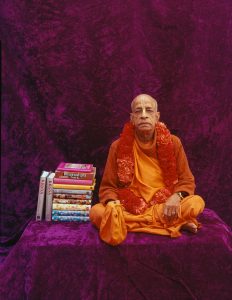 actually a Vaiṣṇava and who is not. But śāstra cannot cheat us at any time, because He is Kṛṣṇa and has emanated from the mouth of Kṛṣṇa, or from the breathing of Kṛṣṇa. If there is any doubt about guru or Vaiṣṇavas, we will have to consult śāstra. That is why Caitanya Mahāprabhu told to Rāya Rāmānanda, “Whatever You speak, speak with examples from śāstra. Then I will consider that what you are speaking is bona fide; otherwise, I will dismiss what you say.”
actually a Vaiṣṇava and who is not. But śāstra cannot cheat us at any time, because He is Kṛṣṇa and has emanated from the mouth of Kṛṣṇa, or from the breathing of Kṛṣṇa. If there is any doubt about guru or Vaiṣṇavas, we will have to consult śāstra. That is why Caitanya Mahāprabhu told to Rāya Rāmānanda, “Whatever You speak, speak with examples from śāstra. Then I will consider that what you are speaking is bona fide; otherwise, I will dismiss what you say.”
So, what did Rāmānanda Rāya tell? For each suggested perfectional goal (sadhya) or process to achieve that goal (sādhana), he quoted a śloka (verse) from the Veda, Purāṇa, Upaniṣad, and especially from Gītā and Bhāgavatam – and especially from the Bhāgavatam.
Śrīmad-Bhāgavatam is bona fide at all times, but the key to understanding and realizing it is in the hands of the bhakta-bhāgavata. This is the thing. The pure Vaiṣṇavas have the key. They are bhakta-bhāgavata (the personalities in whose heart Śrīmad-Bhāgavatam is manifest), but Śrīmad-Bhāgavatam is the heart of Kṛṣṇa.
Śrī Caitanya Mahāprabhu used to recite ślokas of Śrīmad-Bhāgavatam, such as:
barhāpīḍaṁ naṭa-vara-vapuḥ karṇayoḥ karṇikāraṁ
bibhrad vāsaḥ kanaka-kapiśaṁ vaijayantīṁ ca mālām
randhrān veṇor adhara-sudhayāpūrayan gopa-vṛndair
vṛndāraṇyaṁ sva-pada-ramaṇaṁ prāviśad gīta-kīrtiḥ
(Śrīmad-Bhāgavatam 10.21.5)
[Śyāmasundara entered the forest of Vṛndā-devī, accompanied by His cowherd boyfriends. His head was decorated with a peacock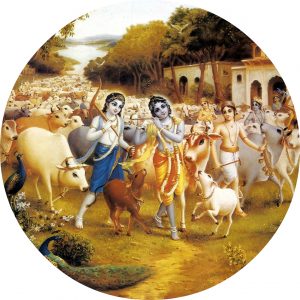 feather; He wore yellow karṇikāra flowers over His ears, and a dazzling golden-yellow garment on His body. A fragrant vaijayantī garland made of five kinds of flowers hung around His neck and extended down to His knees. He was splendidly attired as an expert dancer, and He appeared just like a very fine actor on stage. He poured the nectar of His lips through the holes of His flute, and the cowherd boys followed behind Him, singing His glories. Śrī Kṛṣṇa made the land of Vṛndāvana even more charming than Vaikuṇṭha, for He beautified it with prints of His lotus feet, which were marked with the conch, disk, and other symbols.]
feather; He wore yellow karṇikāra flowers over His ears, and a dazzling golden-yellow garment on His body. A fragrant vaijayantī garland made of five kinds of flowers hung around His neck and extended down to His knees. He was splendidly attired as an expert dancer, and He appeared just like a very fine actor on stage. He poured the nectar of His lips through the holes of His flute, and the cowherd boys followed behind Him, singing His glories. Śrī Kṛṣṇa made the land of Vṛndāvana even more charming than Vaikuṇṭha, for He beautified it with prints of His lotus feet, which were marked with the conch, disk, and other symbols.]
Mahāprabhu would sometimes not be able to recite the entire śloka. He only started, and then became ecstatic and would call out, “Rādhe Rādhe, Kṛṣṇa Kṛṣṇa Kṛṣṇa!” Then Gadādhara Prabhu would come and help Him.
There are so many ślokas, such as:
aho bakī yaṁ stana-kāla-kūṭaṁ
jighāṁsayāpāyayad apy asādhvī
lebhe gatiṁ dhātry-ucitāṁ tato ’nyaṁ
kaṁ vā dayāluṁ śaraṇaṁ vrajema
(Śrīmad-Bhāgavatam 3.2.23)
[How astonishing! When Pūtanā, the wicked sister of Bakāsura, tried to kill child Kṛṣṇa by offering Him deadly poison on her breast, He gave her the position of His nursemaid. Could I ever have as merciful a shelter as that of Lord Kṛṣṇa?]
Śāstra has no bhrama (tendency to commit mistakes), pramāda (tendency to be illusioned), vipralipsā (cheating propensity), or karaṇāpāṭava (imperfect senses); but a sādhu may do all these things. From the kaniṣṭha-adhikārī to uttama mahā-bhāgavatas like Śukadeva Gosvāmī and Nārada Gosvāmī, all are Vaiṣṇavas, but we will have to recognize who is who. How? If they are following Śrīmad-Bhāgavatam, then they are true sādhu and guru, otherwise not. By following śāstra, they have become sādhu. Otherwise they are not sādhu, not Vaiṣṇavas – not actual Vaiṣṇavas.
propensity), or karaṇāpāṭava (imperfect senses); but a sādhu may do all these things. From the kaniṣṭha-adhikārī to uttama mahā-bhāgavatas like Śukadeva Gosvāmī and Nārada Gosvāmī, all are Vaiṣṇavas, but we will have to recognize who is who. How? If they are following Śrīmad-Bhāgavatam, then they are true sādhu and guru, otherwise not. By following śāstra, they have become sādhu. Otherwise they are not sādhu, not Vaiṣṇavas – not actual Vaiṣṇavas.
ātmārāmāś ca munayo
nirgranthā apy urukrame
kurvanty ahaitukīṁ bhaktim
ittham-bhūta-guṇo hariḥ
[Sūta Gosvāmī said: All different varieties of ātmārāmas (those who take pleasure in the ātmā, or spirit soul), especially those established on the path of self-realization, though freed from all kinds of material bondage, desire to render unalloyed devotional service unto the Personality of Godhead. This means that the Lord possesses transcendental qualities and therefore can attract everyone, including liberated souls.]
At first, Śukadeva Gosvāmī was a brahma-jñānī, and he went to the jungle. But later, when he returned and heard the entire Śrīmad-Bhāgavatam, then he became a rasikā Vaiṣṇava. And then he declared:
nigama-kalpa-taror galitaṁ phalaṁ
śuka-mukhād amṛta-drava-saṁyutam
pibata bhāgavataṁ rasam ālayaṁ
muhur aho rasikā bhuvi bhāvukāḥ
[O expert and thoughtful men, relish Śrīmad-Bhāgavatam, the mature fruit of the desire tree of Vedic literature. It emanated from the lips of Śrī Śukadeva Gosvāmī. Therefore this fruit has become even more tasteful, although its nectarean juice was already relishable for all, including liberated souls.]
What is that Bhāgavatam? It is rasamālayam, the endless ocean of rasa. If a person does not follow the Śrīmad-Bhāgavatam, he is not a sādhu.
śrīmad-bhāgavataṁ pramāṇam amalaṁ premā pum-artho mahān
śrī-caitanya-mahāprabhor matam idaṁ tatrādaro naḥ paraḥ
The spotless authority is Śrīmad-Bhāgavatam, and this is accepted by Mahāprabhu himself. If a person is not following the Śrīmad-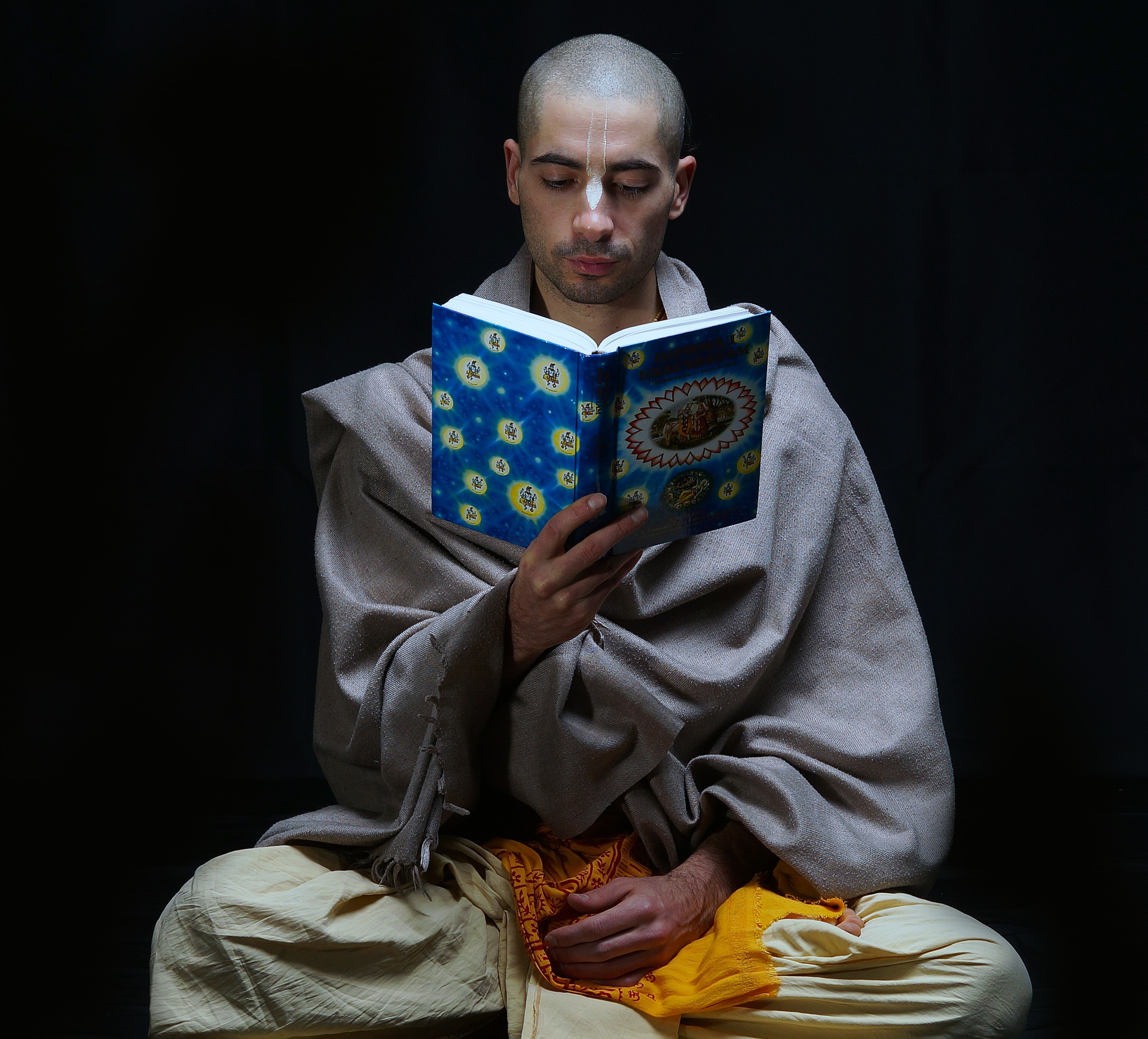 Bhāgavatam, although he may be considered a great philosopher and famous as a great bhakta, still, we don’t recognize him as an authority. On the other hand, we recognize one as an authority if he is absorbed in the Śrīmad-Bhāgavatam and knows the meaning of Caitanya Mahāprabhu’s instructions to Sārvabhauma Bhaṭṭācārya. Sārvabhauma Bhaṭṭācārya presented nine explanations to the verse beginning ātmārāmas ca of Śrīmad-Bhāgavatam, and Caitanya Mahāprabhu presented sixty-four explanations of the same verse. Hearing Mahāprabhu’s explanations, Sārvabhauma Bhaṭṭācārya fell flat, offering his prostrated obeisances at the Lord’s lotus feet.
Bhāgavatam, although he may be considered a great philosopher and famous as a great bhakta, still, we don’t recognize him as an authority. On the other hand, we recognize one as an authority if he is absorbed in the Śrīmad-Bhāgavatam and knows the meaning of Caitanya Mahāprabhu’s instructions to Sārvabhauma Bhaṭṭācārya. Sārvabhauma Bhaṭṭācārya presented nine explanations to the verse beginning ātmārāmas ca of Śrīmad-Bhāgavatam, and Caitanya Mahāprabhu presented sixty-four explanations of the same verse. Hearing Mahāprabhu’s explanations, Sārvabhauma Bhaṭṭācārya fell flat, offering his prostrated obeisances at the Lord’s lotus feet.
So, vidyā bhāgavata vadhiḥ – Bhāgavatam is the limit of education. If one understands Bhāgavatam, he’s finished his education.
It is true that Vaiṣṇavas have said that Kṛṣṇa and Yogamāyā both came from the womb of Yaśodā. But you should know that not only are these the words of Vaiṣṇavas, this is stated in the Śrīmad-Bhāgavatam and also in the Hari-vaṁśa-Purāṇa, written by Śrīla Vyāsa – that Kṛṣṇa came from the womb of Yaśodā. It has been clearly written there. It is not only that Viśvanātha Cakravartī Ṭhākura and Śrīla Sanātana Gosvāmī and Śrīla Jīva Gosvāmī have explained this. Rather, their explanations are on the basis of the authority of bona fide śāstra. Jīva Gosvāmī has presented all these topics in the first  Sandarbha – Tattva-sandarbha – and Śrīla Baladeva Vidyābhūṣaṇa has presented these topics in his Siddhānta-darpaṇa. We should know and honour all these truths.
Sandarbha – Tattva-sandarbha – and Śrīla Baladeva Vidyābhūṣaṇa has presented these topics in his Siddhānta-darpaṇa. We should know and honour all these truths.
At the same time, without bhakta-bhāgavata (the bona fide guru and Vaiṣṇava), we cannot know the Śrīmad-Bhāgavatam; the key is in their hands. We should always honour them, not less than Kṛṣṇa, but more than Kṛṣṇa. We first do arcana of Gurudeva and then Rādhā-Kṛṣṇa:
yasya deve parā bhaktir
yathā deve tathā gurau
tasyaite kathitā hy arthāḥ
prakāśante mahātmanaḥ
[All the confidential truths described in this Upaniṣad will be revealed to that great soul who has the same exclusive, uninterrupted, transcendental devotion for his guru that he has for Bhagavān.]
Actually, guru should be honoured more than Kṛṣṇa Himself, because guru has taken us to the lotus feet of Kṛṣṇa. He has given the relationship with Kṛṣṇa, otherwise, we could not have it. First worship Gurudeva, and then the Deities. Also in aṣṭa–kālīya–līlā; first Gurudeva, then Caitanya Mahāprabhu, and then come to Kṛṣṇa and Rādhā. This is the process.
We are indebted to Vaiṣṇavas, because they have taken us to gurudeva. Otherwise, we could not have realized who is guru and who is not guru. We are indeed indebted to the Vaiṣṇavas, and gurudeva is also a Vaiṣṇava. If a gurudeva is not honouring Vaiṣṇavas, then he is not a bona fide guru – he should not be taken as 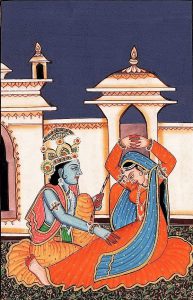 a guru.
a guru.
Sometimes dīkṣā-guru is superior; sometimes sīkṣā-guru is superior. For example, we treat and understand Rūpa Gosvāmī as our sīkṣā-guru. Kṛṣṇa is sīkṣā-guru, Lalita is sīkṣā-guru, Viśākhā is sīkṣā-guru, and Svarupa Dāmodara and Rāya Rāmānanda are sīkṣā-gurus. They are not inferior to our gurudeva. They – Rūpa Gosvāmī, Svarūpa Dāmodara, Rāya Rāmānanda – are worshipable for our gurudeva also.
Still, they are sīkṣā-gurus for us; we should not consider who is inferior and who is superior among them. Truly, Kṛṣṇa is our gurudeva, or Caitanya Mahāprabhu, and He is inspiring us. He is caitya-guru. He is not inferior to our dīkṣā-guru.
Certainly, we are indebted to all Vaiṣṇavas, because they have given us all these truths. We should honour Vaiṣṇavas, Gurudeva, sīkṣā-guru, dīkṣā-guru, Śrī Caitanya Mahāprabhu, Nityānanda Prabhu, all His associates, and also Rādhā and Kṛṣṇa with all Their associates.
*Transcribed and edited by the Bhaktabandhav Team (Is Gurudeva His Institution?)
Image/Art made possible by Pixabay.com & Krishnapath.org

